Matrix Gel Cell Culture: Techniques & Applications
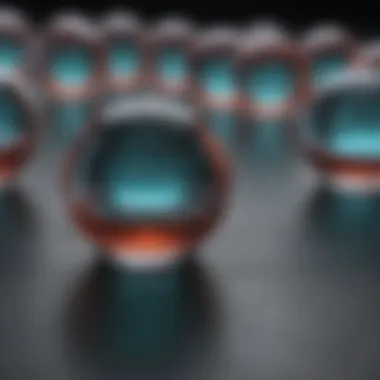
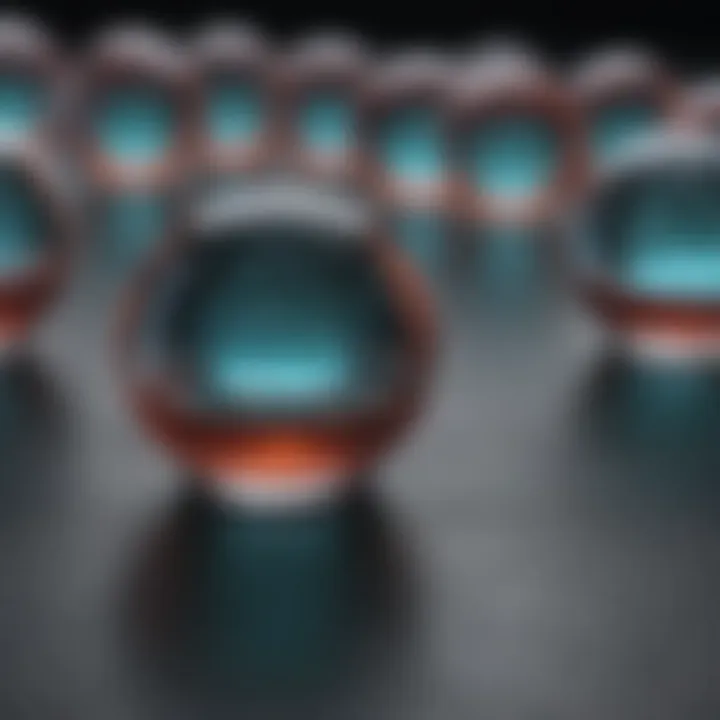
Intro
Matrix gel cell culture represents a crucial advancement in biological research, providing a dynamic environment that closely mimics natural tissues. This technique plays a significant role in various applications, from tissue engineering to drug testing. Understanding the fundamentals of matrix gel technologies and their practical applications is essential for researchers and practitioners in the field. This narrative will delve into the techniques and advancements associated with matrix gel cell culture, offering insights that can elevate your knowledge and approach.
Overview of Research Topic
Brief Background and Context
Cell culture techniques have evolved considerably over past decades, primarily driven by the need for more physiologically relevant models. Traditional two-dimensional cultures often fail to provide accurate insights into cell behavior in vivo due to their simplistic nature. The introduction of matrix gel cell culture has transformed this landscape, allowing cells to proliferate in three-dimensional structures, thereby improving their functionality and response to stimuli.
Importance in Current Scientific Landscape
The significance of matrix gel cell culture cannot be overstated. As science progresses, the demand for accurate models to study disease mechanisms and test therapies intensifies. Matrix gels provide a more relevant alternative to conventional cultures, allowing for a better understanding of tissue architecture and cellular interactions.
Methodology
Research Design and Approach
The exploration of matrix gel cell culture requires a methodical approach that encompasses a variety of techniques and materials. Researchers often choose specific types of gels based on the intended application. Common options include Matrigel, collagen, and alginate. Each type offers distinct benefits and constraints.
Data Collection Techniques
Data collection in matrix gel studies typically involves both qualitative and quantitative techniques. These may include:
- Histological analysis: Evaluating cellular organization and structure within the gel
- Biochemical assays: Measuring cell proliferation, viability, and functionality
- Imaging techniques: Utilizing confocal microscopy or fluorescence to capture dynamic cellular behaviors
"Innovative advancements in matrix gel technology open up new avenues for drug discovery and regenerative medicine, positioning researchers at the forefront of scientific exploration."
Employing these various techniques enables researchers to gather comprehensive data, enhancing their understanding of cell behavior under physiological conditions.
Foreword to Matrix Gel Cell Culture
The exploration of cell behavior in simulated environments is vital for progress in biological research and therapeutic development. Matrix gel cell culture stands out as a fundamental technique that provides researchers the ability to study cells in settings that replicate physiological conditions more closely than traditional 2D culture methods.
This technique enables scientists to examine complex cellular interactions within a three-dimensional structure. Importantly, matrix gels support a multitude of cell types, allowing for diverse applications in areas such as tissue engineering, drug development, and cancer research. Researchers have recognized the need for more realistic modeling, pushing the needle toward enhanced understanding of cell behavior in vivo.
Through this article, the aim is to deliver a thorough overview of matrix gel technologies and their applications. By highlighting important aspects of this technique, professionals in the field will gain insights into both its advantages and inherent limitations, as well as how it integrates with contemporary advancements in biotechnology.
Definition and Importance
Matrix gel cell culture involves the use of various gel-like materials that provide a scaffold for cell growth. These gels simulate the extracellular matrix found in native tissues, thereby facilitating cell adhesion, growth, and differentiation. The importance of this approach is underscored by its ability to provide an environment that mimics in vivo conditions, which is essential for accurate biological studies.
In summary, matrix gel cell culture represents a substantial shift from conventional techniques. Its relevance spans multiple applications, paving the way for innovations in regenerative medicine and beyond. The need for effective modeling of human tissues cannot be understated, making the understanding of matrix gels crucial for current and future research.
Historical Context
The journey of matrix gel cell culture began decades ago within the fields of cellular biology and biomaterials. Early experiments focused on the use of collagen, a natural protein prominent in connective tissues, as a culture substrate. Researchers noted that collagen-based gels improved the functions and morphologies of various cell types compared to 2D cultures.
As knowledge advanced, other materials such as gelatin and agarose emerged, broadening the scope of available options. Over time, the introduction of techniques such as decellularization led to the exploration of dECM, further enhancing the authenticity of the cellular environment.
This historical perspective reflects a growing recognition of the necessity for 3D culture systems that closely represent the complexity found in vivo. Such advancements have ignited research into the interactions between cells and their microenvironments, facilitating breakthroughs in tissue engineering, drug screening, and cancer therapies.
Fundamental Concepts of Cell Culture
Understanding the fundamental concepts of cell culture is crucial for anyone interested in the field of biological research. Cell culture techniques allow scientists to create controlled environments that mimic natural conditions, providing valuable insights into cellular behaviors, interactions, and responses. This section addresses key elements that make these concepts essential, focusing on their significance in matrix gel cell culture.
Cell Types Used in Culture
Different cell types provide unique insights, and their choice significantly affects research outcomes. The most commonly used cells in culture include:
- Adherent Cells: These are cells that attach to a surface, such as tissue culture plates. They are crucial for studying cellular interactions in a fixed environment. Examples include fibroblasts and many epithelial cells.
- Suspension Cells: Such cells grow freely in the culture medium and are often used in hematological studies. Lymphocytes are a common type of suspension cell utilized in various experiments.
- Stem Cells: These cells can differentiate into different cell types, offering potential for regenerative medicine and developmental biology studies. Their manipulation requires careful consideration, especially regarding growth factors and conditions.
- Primary Cells: Isolated directly from living tissues, primary cells more closely resemble the in vivo environment yet have limited lifespan and reproducibility.
Choosing the right cell type not only enhances the relevance of the study but also determines the applicability of results to real-life scenarios.
Medium and Growth Factors
The culture medium is a crucial component in cell cultivation. A well-designed medium provides essential nutrients and environmental conditions for optimal growth. The components can include:
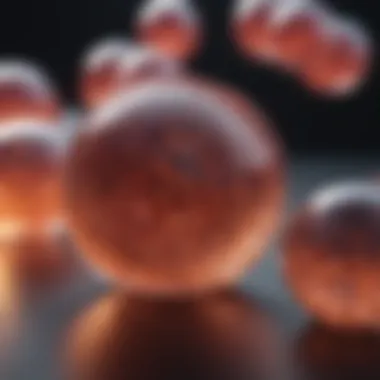

- Amino Acids: These are the building blocks of proteins and are vital for cellular functions and growth.
- Vitamins: Required for various cellular processes, these help in maintaining metabolic activities.
- Salts: They maintain osmotic balance and provide essential ions needed for cell survival.
- Glucose: This carbohydrate serves as an energy source for cell metabolism.
Alongside the medium, growth factors play a significant role in promoting cell proliferation, differentiation, and survival. These bioactive molecules can include:
- Epidermal Growth Factor (EGF): Stimulates cell growth, proliferation, and differentiation.
- Fibroblast Growth Factor (FGF): Involved in wound healing and development.
- Insulin-like Growth Factors (IGFs): They play a crucial role in growth and development by adapting the influence of growth hormones.
By optimizing both the medium and growth factors, researchers can create specific conditions that enhance desired cellular behaviors, making these two concepts foundational in developing matrix gel cell culture systems.
Key Point: A comprehensive understanding of cell types and culture conditions can lead to more effective experimental designs and outcomes.
Types of Matrix Gels
Matrix gels are critical for cell culture as they provide an environment that mimics the natural extracellular matrix. This allows cells to grow and behave as they would in vivo. The composition of the matrix gel can greatly influence cellular behaviors such as migration, differentiation, and proliferation. Researchers often choose specific types of matrix gels based on their objectives and the cellular responses they wish to promote. Understanding the various types of matrix gels is essential in the application of cell culture technologies within fields like tissue engineering and drug discovery.
Collagen-Based Gels
Collagen-based gels are the most commonly used matrix gels in cell culture. They are derived from collagen, a primary structural protein found in the body. These gels closely resemble the natural extracellular matrix, providing a conducive environment for cell growth. The use of collagen gels often leads to enhanced cell adhesion and proliferation. Additionally, they support a range of cell types, including fibroblasts and stem cells.
Collagen gels can be easily modified to achieve specific physical properties. Changes in collagen concentration can adjust the stiffness of the gel, affecting cell behavior. The presence of growth factors within the gel can also further enhance cell differentiation. However, researchers need to consider factors such as the source of collagen and its denaturation to ensure optimal performance.
Gelatin and Agarose Gels
Gelatin and agarose gels offer alternative options for culture applications. Gelatin is a denatured form of collagen and has similar properties. It is less expensive than collagen gels, making it a more accessible option for many laboratories. Gelatin gels can be used for a variety of cellular models, but their mechanical properties may not be as conducive for long-term cultures.
Agarose gels, derived from seaweed, are particularly useful in applications that require a stable structure. They are commonly employed in 3D culture systems and allow for the formation of well-defined physical structures. Agarose is less adhesive than gelatin or collagen, which can be a disadvantage for certain cell types. Therefore, it is important to carefully select the right gel based on the specific needs of the experimental design.
Decellularized Extracellular Matrix (dECM)
Decellularized extracellular matrix is gaining traction as a matrix gel type due to its biological fidelity. This matrix emerges from native tissues after the removal of all cellular components. The resulting scaffold retains the natural biochemical and structural characteristics of the tissue. This makes dECM particularly valuable for applications involving tissue engineering and regenerative medicine.
The use of dECM provides a more realistic environment for the cells and can influence cellular behavior more effectively than synthetic gels. However, the preparation of dECM can be complex and costly, which might limit its wide-scale application. The source of the ECM also presents ethical considerations that must be addressed by researchers.
Preparation Techniques for Matrix Gels
The preparation techniques for matrix gels are fundamental to the success of cell culture applications. Understanding these methods allows researchers to develop environments that mimic natural tissue structure and function, which is significant for various fields such as tissue engineering and drug development. Proper gel preparation affects the physical and biochemical properties of the culture system. Therefore, factors like isolation, purification, gel formation, and cross-linking are critical to both the quality of the matrix and the behavior of the cultured cells.
Isolation and Purification
The isolation and purification of biological materials from which matrix gels are derived is a key initial step. Typically, collagen is extracted from animal tissues, such as tendons or skin. This process involves several steps to ensure high purity and functionality of the collagen fibers. The isolation seeks to prevent contaminants that might alter the properties of the gel.
- Extraction Process: The extraction often involves using acid or enzymatic digestion, which breaks down proteins and releases collagen.
- Purification Techniques: After extraction, further purification can be achieved through methods like dialysis or ultrafiltration. These methods remove low molecular weight impurities that might interfere with cell behavior.
Successful isolation and purification are vital for ensuring that the matrix gel will support cell attachment, proliferation, and differentiation effectively. This ensures that experimental results are reliable and reproducible.
Gel Formation and Cross-Linking
Once the material has been isolated and purified, the next step is gel formation. This often involves mixing the collagen solution with specific conditions that promote gelling. The temperature, pH, and ionic strength can play a substantial role in this process.
- Factors Influencing Gel Formation:
- Temperature: Lower temperatures may enhance the viscosity of the solution, leading to better gel formation.
- pH Levels: The pH must be optimized to facilitate the polymerization of collagen.
After obtaining a gel, cross-linking is performed to enhance the mechanical strength and stability of the gel. Cross-linking assembles the collagen fibers into a network, which is essential for providing structural integrity.
- Common Cross-Linking Agents: Chemical agents such as glutaraldehyde or genipin are often used. These create covalent bonds between collagen fibers, thus reinforcing the gel.
The proper control of gel formation and cross-linking ensures that the physical properties of the gels can sustain cellular activity and mimic the extracellular matrix effectively.
"The preparation of matrix gels significantly influences cellular behavior, impacting outcomes in research and applications across biomedicine."
Understanding these preparation techniques amplifies the potential applications of matrix gels, paving the way for innovation in tissue engineering and regenerative medicine.
Applications of Matrix Gel Cell Culture
Matrix gel cell culture represents a significant advancement in the fields of biological research and regenerative medicine. This section explores various applications of matrix gels, emphasizing their role in pivotal areas such as tissue engineering, drug screening, cancer research, and stem cell research. Each application not only highlights the value of matrix gel technologies but also demonstrates their potential to bridge the gap between basic research and clinical applications.
Tissue Engineering
Tissue engineering is one of the most profound applications of matrix gel cell culture. Matrix gels provide a supportive environment for cells to grow and differentiate, mirroring the natural biological environment found in living tissues. Their composition allows for optimal nutrient diffusion and waste removal, which are crucial for cell survival and function.
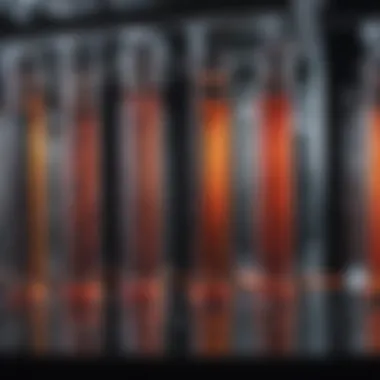

The ability to manipulate the physical and biochemical properties of matrix gels is a powerful tool in designing functional tissues. This can either involve the use of synthetic materials or natural proteins. By carefully selecting the right matrix, researchers can influence cell behavior, including growth patterns and differentiation pathways. The incorporation of bioactive molecules within these matrices further enhances their capability to promote tissue repair and regeneration.
Moreover, advances in fabrication techniques, such as 3D bioprinting, allow for the production of complex tissue architectures utilizing matrix gels. This level of sophistication can generate tissues that closely resemble native structures, thus improving the prospects for functional grafts in medical applications.
Drug Screening and Development
Pivoting toward pharmaceutical applications, matrix gel cell culture has transformed drug screening and development processes. Traditional methods often employed two-dimensional cultures that do not adequately replicate human tissue responses. This gap leads to difficulty in predicting drug efficacy and safety before human trials.
Matrix gels provide a more physiologically relevant system in which cells can interact more naturally, replicating three-dimensional tissue structures and behaviors. By utilizing these gels, researchers can better assess how drugs will affect cells in a more accurate manner. For example, certain drug candidates may show different levels of cytotoxicity or effectiveness when evaluated in a matrix gel as opposed to conventional flat cultures.
In addition, the ability to customize matrix properties also enables specific disease models to be created. This can lead to more targeted drug development efforts and faster identification of viable therapeutic candidates.
Cancer Research
The role of matrix gels in cancer research is equally significant. Tumor microenvironments can be modeled using these gels, enabling researchers to study cancer cell behavior, effects of the extracellular matrix, and the interactions between cancer cells and surrounding tissues. This helps in understanding metastasis and tumor growth, which are critical for developing effective treatment strategies.
By replicating the mechanical properties and biochemical signals present in actual tumors, matrix gels allow researchers to investigate cancer drug responses in a more realistic context. It also aids in evaluating how various treatments can alter tumor growth dynamics, providing insights that are crucial for tailored cancer therapies.
Stem Cell Research
Finally, matrix gel cell culture has substantial implications in stem cell research. The niche in which stem cells reside plays an essential role in regulating their fate. Matrix gels can mimic the stem cell niche, which is vital for maintaining pluripotency and promoting differentiation into desired cell types.
Using matrix gels, scientists can investigate the stem cell microenvironment and factors that influence stem cell behavior. This information is critical in regenerative medicine applications as it influences strategies for cell therapies. Tailoring matrix gel compositions can enhance the efficiency of stem cell differentiation, which is pivotal in producing specialized cells for treatment of various diseases.
In summary, the applications of matrix gel cell culture are extensive and critical for advances across biological fields. Each area—whether it is tissue engineering, drug development, cancer research, or stem cell studies—demonstrates how matrix gels provide unique benefits. They not only enhance experimental accuracy but also pave the way for innovative therapies and treatments.
Advantages of Using Matrix Gels
Matrix gels are crucial in cell culture due to their numerous advantages. These gels create an environment that mimics the extracellular matrix in vivo, allowing cells to behave more naturally than in traditional two-dimensional cultures. The significance of using matrix gels extends across various fields, including tissue engineering, drug discovery, and fundamental biological research. This section emphasizes the specific benefits of matrix gels in promoting cell function and advancing research methodologies.
Enhanced Cell Survival
One of the most notable benefits of using matrix gels is the improvement in cell survival rates. Cells cultured in these gels experience a greater degree of protection from adverse conditions. This is largely due to the three-dimensional structure that matrix gels provide. In a three-dimensional environment, cells can interact more effectively with one another and with the gel itself. This leads to a reduction in cell stress and apoptosis, encouraging longer lifespans for cultured cells.
Research has shown that certain matrix gels, such as those based on collagen, support the growth of various cell types, including epithelial and mesenchymal cells. By encapsulating cells within a gel, researchers can also prevent them from undergoing differentiation too early, thus allowing for controlled development and enhanced viability over time.
Improved Cell Differentiation
Matrix gels also contribute to improved cell differentiation. Cells in a three-dimensional matrix can better sense their environment, which is vital for normal development. Gels are designed to replicate specific biochemical cues found in the native extracellular matrix. With these cues, stem cells can differentiate into the desired cell type more efficiently.
For instance, certain gel compositions can promote the differentiation of stem cells into neurons or cardiomyocytes by mimicking the natural signals these cells would receive in the body. Therefore, the ability of matrix gels to influence and guide cell fate decisions is a significant advantage in stem cell research and regenerative medicine.
More Accurate In Vivo Models
Another critical advantage of matrix gels is their ability to create more accurate in vivo models for research. In traditional two-dimensional cell cultures, cells may not exhibit the same behaviors as when they are in an organism. Matrix gels provide a more relevant context for cellular interactions, thus leading to results that are more predictive of in vivo outcomes.
The use of matrix gels enables researchers to simulate complex tissue environments. This is particularly important in drug testing, where understanding how a treatment interacts with tissues influences its efficacy and safety. Moreover, matrix gels can be modified to include various biochemical cues or mechanical properties that reflect actual human tissues, making them a powerful tool in both research and clinical applications.
"The advanced manipulation of matrix gels has resulted in significant leaps in our capabilities to study cellular behavior in vitro, leading to better translational outcomes."
In summary, the advantages of using matrix gels are profound. They enhance cell survival, improve differentiation, and create models that better replicate biological conditions. These factors collectively contribute to the value of matrix gels in biotechnology and biomedical research.
Limitations and Challenges
The field of matrix gel cell culture represents a significant advancement in biological sciences. However, several limitations and challenges exist within this area, which need exploration. Understanding these limitations is essential for improving current practices and developing new strategies for research and applications. The effectiveness and accuracy of cell culture techniques depend heavily on addressing these challenges.
Mechanical Properties of Gels
Mechanical properties play a crucial role in matrix gel performance. The stiffness, elasticity, and viscosity of gels influence how cells interact with their environment, affecting their behavior, growth, and differentiation. For instance, a matrix that is too rigid can restrict cell movement, hampering normal physiological activities. Conversely, if the gel is too soft, it may not support cell adhesion or spread effectively.
The characterization of these properties is vital. Researchers must quantitatively analyze the mechanical attributes to ensure they are within a suitable range. This involves various testing methods, such as rheology, to measure the viscoelastic properties of the gel. Incorrect mechanical properties can lead to misleading results in experimental data.
Reproducibility Issues
Reproducibility is another significant concern in matrix gel technologies. It refers to the ability to obtain consistent results across different experiments. Variability in gel preparation, the source of materials, and environmental conditions can lead to discrepancies. These issues complicate studies that require precise comparisons, such as drug responses or cell behavior analyses.
To mitigate reproducibility problems, strict protocols should be implemented. This can include detailed documentation of gel composition, preparation methods, and environmental factors during cell culture. Regular calibration of equipment and thorough training of personnel can also help enhance reproducibility. Without addressing this issue, the scientific validity of findings may be compromised.
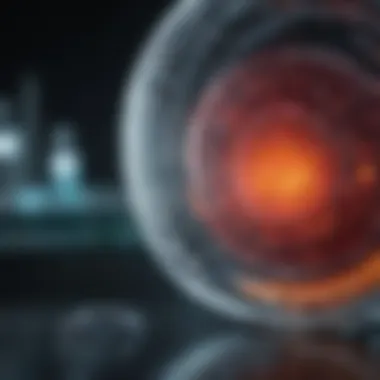

Cell-Matrix Interactions
Cell-matrix interactions are foundational in cell biology. Matrix gels aim to replicate the extracellular matrix (ECM). However, discrepancies in how cells perceive and respond to these synthetic matrices can arise. Different cell types interact with matrix components uniquely, leading to variable outcomes in cultured cells. The signaling pathways activated through these interactions can be significantly different from what occurs in vivo.
To improve outcomes, researchers should focus on tailoring matrix formulations to the specific cell types used. The integration of bioactive molecules, such as growth factors or adhesion peptides, into the gel can enhance interactions and promote desired cellular behaviors. Furthermore, studies into how cells respond to these matrices can provide invaluable insights for both basic and applied research.
Recent Advances in Matrix Gel Technologies
Recent advances in matrix gel technologies represent a significant leap in the versatility and effectiveness of cell culture practices. As researchers strive to replicate the complex in vivo environment, these advancements address key challenges faced in traditional cell culture. This section delves into the latest innovations and their implications for biological research and therapeutic applications.
Innovations in Gel Composition
Innovations in gel composition are pivotal in enhancing the functional properties of matrix gels. New materials are constantly being explored to create gels that not only support cell attachment and growth but also mimic the biological environment more closely. For instance, the integration of bioactive molecules into gel formulations improves cell signaling and promotes desired cellular behaviors.
Recent developments include the use of natural polysaccharides like hyaluronic acid and chitosan, which provide better biocompatibility. Furthermore, synthetic polymers such as polyethylene glycol are being modified to introduce functional groups that can facilitate cell-matrix interactions. These advancements lead to customizable gels tailored to specific research needs, thereby increasing the applicability across various fields, including tissue engineering and regenerative medicine.
Important Note: The ability to fine-tune gel composition not only enhances cellular responses but also significantly reduces the time and cost associated with optimizing cell culture conditions.
Smart Hydrogels and Their Functionality
Smart hydrogels are an innovative class of materials that respond dynamically to environmental stimuli, offering unprecedented control over cell culture scenarios. These hydrogels adapt to changes in conditions such as pH, temperature, and ionic strength, allowing researchers to create more realistic models of physiological responses. This unique feature facilitates the study of cell behavior in a controlled setting that simulates the complexities of living tissues.
Such hydrogels can be engineered to release growth factors or other signaling molecules in a regulated manner, significantly improving cell survival and proliferation rates. For example, incorporating thermoresponsive polymers enables gel liquefaction at physiological temperature, easing cell seeding and allowing for more uniform distribution.
Additionally, smart hydrogels can serve in drug delivery systems, where they protect therapeutic agents and ensure timely release in response to specific stimuli. Their multifunctionality opens new avenues for applications ranging from cancer treatment to wound healing.
The integration of smart hydrogels in cell culture methodologies reinforces the importance of innovation in matrix gel technologies and its role in advancing the understanding of cellular dynamics in vitro.
Future Perspectives
The exploration of future perspectives in matrix gel cell culture is vital for the ongoing development of this field. Advancements in technology and an increased understanding of biological processes present opportunities that can reshape research and applications in cell culture.
Integration with Bioprinting Technologies
Bioprinting is a revolutionary technique that combines biology and engineering, allowing for the layer-by-layer construction of biological tissues. The integration of matrix gels with bioprinting technologies has significant implications for the future of tissue engineering.
Matrix gels serve as ideal scaffolds in this process, offering a supportive environment for cells to adhere, proliferate, and differentiate. Researchers are examining ways to improve the properties of these gels to enhance compatibility with bioprinting methods. For instance, varying the mechanical stability of gels can lead to improved structural integrity, which is crucial during tissue formation.
Benefits include:
- Precision in Tissue Architecture: Bioprinting allows for meticulous design of tissue structures, enhancing functionality.
- Customization: Researchers can tailor matrix compositions based on specific tissue needs, which aids personalized approaches in medicine.
- Rapid Prototyping: This technology enables quick experimentation and iteration, expediting the development of new tissue constructs.
However, several challenges remain, such as the need for optimized printing speeds and resolution to maintain cell viability during the printing process.
Potential in Personalized Medicine
The role of matrix gel cell culture in personalized medicine is increasingly relevant as healthcare moves towards more tailored treatments. Personalized medicine focuses on customizing healthcare, with decisions and treatments tailored to individual patient characteristics.
Matrix gels can be designed to reflect the biological environment of a specific patient, providing a platform for:
- Drug Testing: Personalized therapies can be assessed using patient-derived cells cultured within matrix gels, offering insights into treatment responses.
- Modeling Diseases: Unique patient-specific models can facilitate better understanding of disease mechanisms, enabling tailored interventions.
- Regenerative Strategies: Using personalized matrix gels in regenerative medicine can enhance the compatibility of implanted tissues, improving healing outcomes.
"The future of matrix gel technologies is not just about improving existing methods but also exploring novel applications that can transform healthcare."
Explore more about Matrix Gel technologies at Wikipedia.
Finale
The conclusion of this article serves several critical functions in contextualizing the importance of matrix gel cell culture. This technique is not only central to advancing the field of biological research but also plays a significant role in therapeutic developments. By examining matrix gels, we uncover their considerable benefits, such as mimicking natural environments and supporting cellular behavior, which enhances the reliability of research outcomes.
Summary of Key Insights
Matrix gel cell culture techniques have shown remarkable success in various applications. Key insights include:
- Complexity of Cellular Interactions: The composition and properties of matrix gels allow for nuanced study of cell behavior, offering a closer look at how cells respond to their environment. This mimicking helps to clarify the mechanisms behind tissue formation and function.
- Technological Advancements: Innovations like smart hydrogels are advancing the capabilities of cell culture. These materials can respond to stimuli, offering dynamic environments for cellular growth and interaction.
- Broad Applications: The applications of matrix gels extend into tissue engineering, drug screening, and cancer research, showcasing their versatility and importance across multiple scientific domains.
"Matrix gels represent not just a scientific breakthrough but a platform for future cellular therapies and drug development."
Calls for Future Research
Future research in matrix gel cell culture is not just beneficial but essential for progressing science in regenerative medicine and tissue engineering. Potential avenues for exploration include:
- Enhanced Gel Composition: Investigating new materials can lead to the development of better matrix gels that support more complex cell types and behaviors.
- Longitudinal Studies: Emphasizing long-term studies to evaluate how cells behave over extended periods when cultured in matrix gels will provide invaluable insights.
- Integration with Technology: Exploring the combination of matrix gels with bioprinting technology will enhance the precision and efficiency of tissue engineering.
- Health Outcomes: Focusing on the in vivo applications of matrix gel technologies can bring about significant improvements in personalized medicine approaches.
In summary, the future of matrix gel cell culture promises exciting advancements, requiring ongoing research to fully harness its potential.



